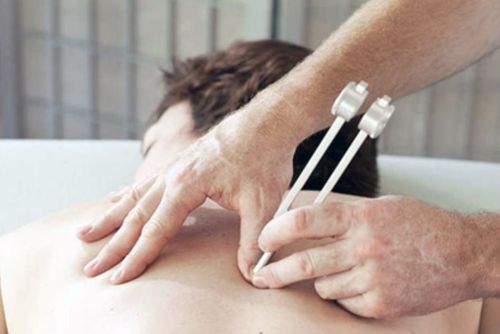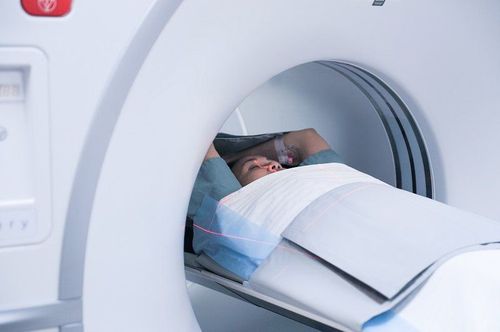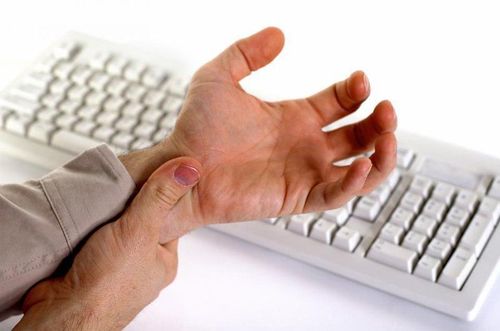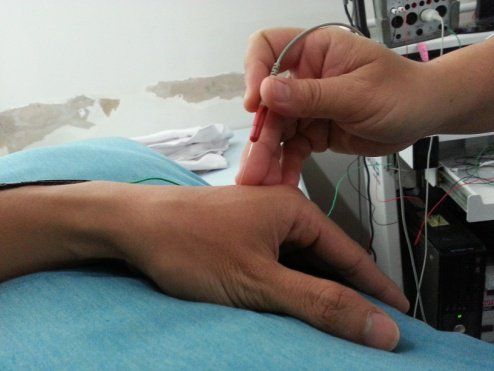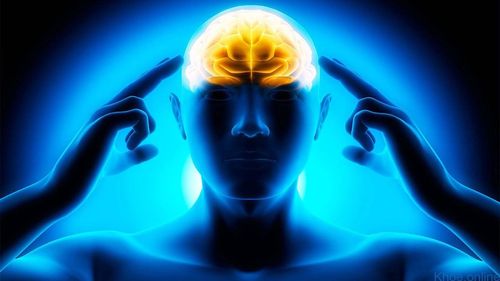This is an automatically translated article.
The article is professionally consulted by Master, Doctor Huynh An Thien - Neurologist - Department of Medical Examination & Internal Medicine - Vinmec Danang International Hospital.Reflex is one of the functions of the nervous system. The integrity of the reflex response is evidence of the integrity of the nervous system. Thereby, examination of nerve reflexes is indispensable in receiving patients with suspected nerve damage in general or neuropathological examination in particular.
1. What is a neuroreflex exam? The reflex examination is the most objective part of the neurological examination. This is useful in helping to determine the extent of damage to the nervous system. In some situations, reflexes may even be a central part of the examination, as in a comatose patient.
The condition for a valid, accurate reflex examination is that it requires minimal cooperation on the part of the patient and produces a response that can be objectively assessed by the physician. At the same time, the doctor needs to know the most commonly performed reflexes and the possible results. However, the interpretation of reflex responses requires some careful analysis, based on functional anatomy and physiology.
Commonly examined reflex groups include:
Reflexes involving the cranial nerves such as pupillary light reflexes, jaw reflexes Skeletal muscle reflexes Superficial cutaneous reflexes All The above reflexes, even at the simplest level, are composed of a sensor arc. In which, the reflex arc requires sensory signals (radial) and motor signals (centrifugal). While simple reflexes involve only a direct synapse between sensory and motor fibers, some reflexes may require multiple associated neurons.
2. Tendon reflex examination The tendon reflex is a simple reflex, with sensory neurons having direct connections with axons in the muscle.

Specifically a 1+ result means a slow or inhibited reflex. In this case, the physician must find out the cause of the effect of the reflex arc, either due to a defect in any of the components or a delayed conduction pathway. On the contrary, if the reflexes are significantly faster than usual it is called 3+ while 4+ means that the reflex is very hyperactive and there is localized tremor. This is a repetitive reflex response and is indicative of damage to the inhibitory system.
In practice, the doctor examines tendon reflexes by hammering on the ends of large tendons such as the patellar tendon, the heel, etc. One way to make the reflex more visible is to reduce the patient's attention. The patient enters the examination by giving the patient a countdown, pulling both hands against each other.
3. Superficial Reflex Examination A superficial reflex is a response to stimuli in the skin. The outcome of a reflex is simply classified as responsive to stimulus or unresponsive. In addition, skin reactions that are not clearly symmetrical about the body axis are also considered abnormal.
The mechanism of these reflexes is quite different from the muscle tension reflexes in that the sensory signal not only reaches the spinal cord but must also travel through many mediators to reach the brain. The response pathway must then descend into the spinal cord to reach the motor neurons. Thus, the superficial reflex is an example of a polyneurotic reflex. Hence, any damage to these components causes abnormal results in the reflex arc.
A classic example of a superficial reflex is the ventral skin reflex. By using a blunt object to stimulate one quadrant of the abdomen, a contraction of the abdominal muscles in that quadrant will be felt. Similarly, skin irritation and response are also easily observed when touching the skin of the scrotum and the skin around the anus.

Similar to the analysis of reflex arcs mentioned above, any abnormalities in the components or compression of the conduction pathway lead to errors in response assessment.
The most classical example of a cranial nerve reflex is the visual light reflex, with the sensory pathway being visual via cranial nerve II and responding by cranial nerve III. To perform this reflex, the doctor uses a specialized pupillary flashlight to shine on one eye, the normal response to the stimulus is that the pupil of the same eye will shrink. When stimulation is stopped, the pupil will dilate. This is the basic reflex in the initial assessment of brain function in comatose patients.
5. Factors that change reflex response Changes in reflex response are caused by physical or physiological lesions or changes in the components that make up the reflex arc. Accordingly, when analyzing the results obtained after generating stimulation and in order to set the goal of inferring pathology and lesion location, doctors need to understand the components related to dysfunction at different levels. different degrees of nervous system.
Muscles: Muscle tension reflex is impaired if muscle strength is reduced Neuromuscular junction: Muscle tension reflex is impaired if there is loss of connection in the neuromuscular junction, causing the signal to be severed Peripheral nerve Marginal : Decreased or asymmetrical reflexes may be due to peripheral nerve damage at the lateral nerve terminals. Nerve roots: The composition of the reflex arcs has the participation of motor and sensory nerve roots. If the nerve root is compressed by an external force, signal conduction is also impaired. However, superficial reflexes are often difficult to detect because of the overlap between the nerve roots. Spinal cord and brain stem: Especially for multi-neuronal reflexes, the spinal cord and brain stem are the reservoirs of neurons that act as connections between afferent neurons and efferent neurons.

Please dial HOTLINE for more information or register for an appointment HERE. Download MyVinmec app to make appointments faster and to manage your bookings easily.






